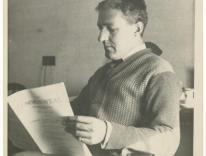There are moments when the New York Times style section lives up to its reputation as a morally relative mirror for shallow, wealthy white people so perfectly that you have to wonder if they're doing it on purpose. This week's "Vows" column is one of those times.
"Vows" is a weekly feature on the "Weddings and Celebrations" page. Sometimes sweet, often obnoxious, it blows up one of that week's wedding announcements into a soft-focus feature story, telling how the couple met and got engaged, with the wedding as the happy ending. Usually the couple has a once-in-a-lifetime meet-cute tale or a quirky wedding ceremony, but sometimes they're just notable and/or well-connected people who apparently like publicity. And sometimes, selling the fairy tale requires papering over some inconvenient facts along the way -- like when you can't explain "how they met" without admitting that one or both parties were in other relationships at the time. Past "Vows" columns have tried to wave those details away -- the conceit is that this couple, now getting married, are obviously Meant For Each Other, and everything else is just water under the bridge. New York magazine's "Daily Intel" blog noted this last year and pronounced it "Gross."
This week, an update: "Times No Longer Even Euphemizing Spouse-Dumping." That's not quite true -- the NYT's capsule summary of this installment of "Vows" is nothing if not euphemistic. "After a first attraction when they were each married to someone else, a couple are married after intervening years." Despite those two "afters," you'll find their how-we-got-together story is really more "during." You really have to read this one to believe it, so I won't spoil the details. But besides the obvious "What were they thinking?" I am also finding myself wondering what the writer was thinking -- the writer they convinced to write this self-justifying and tin-eared press release -- and, even more, what the editor was thinking. Somebody read this pitch, and then read the finished copy, and said, Yes, this is the sort of thing we want to feature in "Vows." Is it possible they couldn't predict the response (revulsion, in most quarters) -- did they really not know that readers would identify with the jilted spouses and resent the attempt to sell the "happy ending"? Or did they know and run it anyway, as a kind of attention-getting prank? Which is worse?


